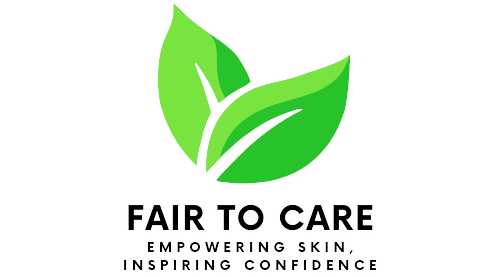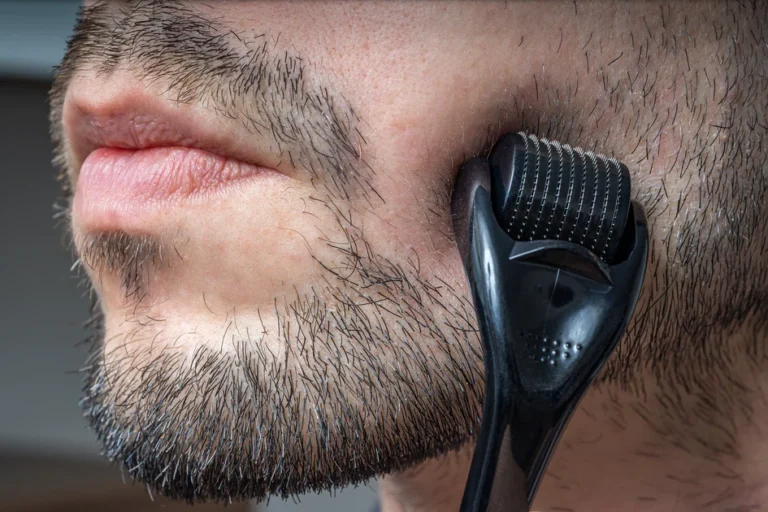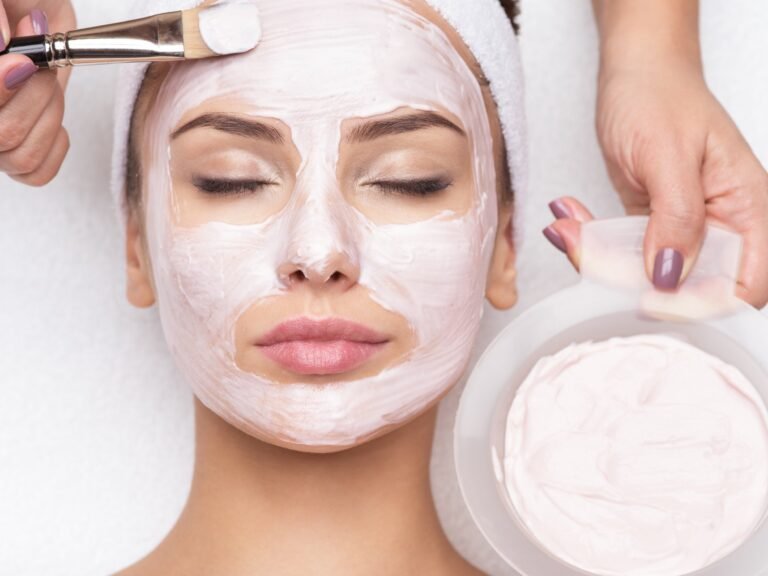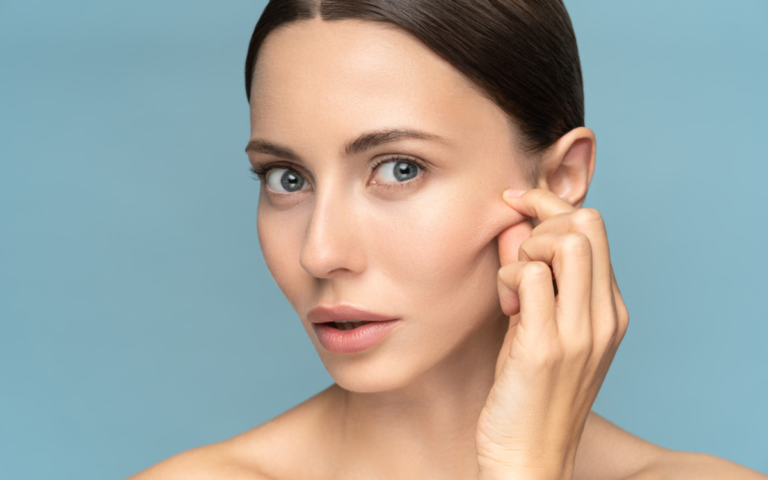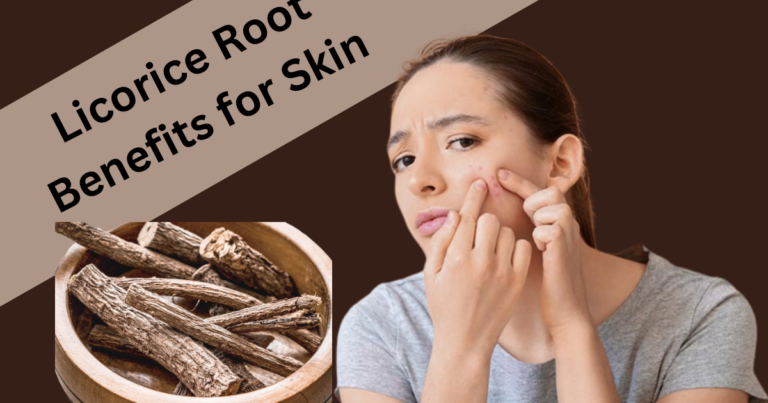How to get Hair Dye off Skin?
How to get Hair Dye off Skin?
Dealing with hair dye stains on the skin can be a frustrating experience. Whether you’re a seasoned DIY hair color enthusiast or a first-timer, accidents happen. In this comprehensive guide, we will explore various methods to safely and efficiently remove hair dye from the skin. From quick home remedies to expert tips, we’ve got you covered.
In the vibrant world of hair transformations, where every shade is an opportunity for self-expression, encountering the aftermath of a hair dye session on your skin is not uncommon. The telltale signs of stained hands, ears, or forehead can be a frustrating side effect of the creative process. But fear not, for this article is your guide to achieving a flawless post-coloring glow!
We’re about to unravel the secrets of effortlessly removing hair dye stains from your skin, ensuring that your journey to a new hair hue is a stain-free adventure. From tried-and-true methods to innovative solutions, we’ve got you covered.
If you’ve ever found yourself pondering how to bid farewell to those stubborn dye marks, look no further – this article is your passport to a pristine, dye-free complexion. So, let’s dive into the art of stain removal and ensure your hair color steals the spotlight, not your stained skin! Ready to discover the tricks of the trade? Read on!
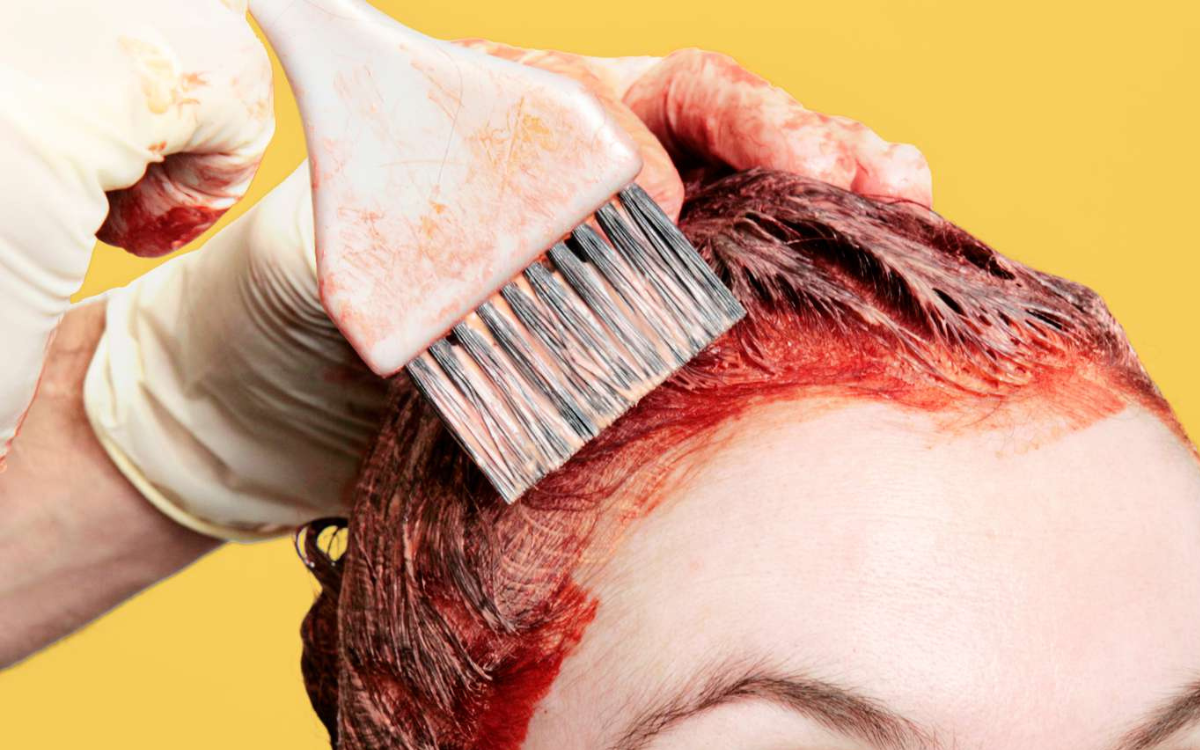
Understanding the Problem
Hair dye stains can be challenging to remove, and the science behind their stubbornness involves both the properties of the dye itself and the materials it comes into contact with. Hair dye typically contains color molecules that can adhere strongly to various surfaces, including skin, clothing, and other surfaces. Understanding the chemistry and physical properties of these dyes can help explain why they create persistent stains.
Chemical Composition of Hair Dye
Hair dye consists of color molecules that are often derived from organic compounds. These molecules are designed to penetrate the hair shaft and bond with the proteins in the hair.
The chemical structure of these color molecules can make them prone to binding with other surfaces, leading to stains.
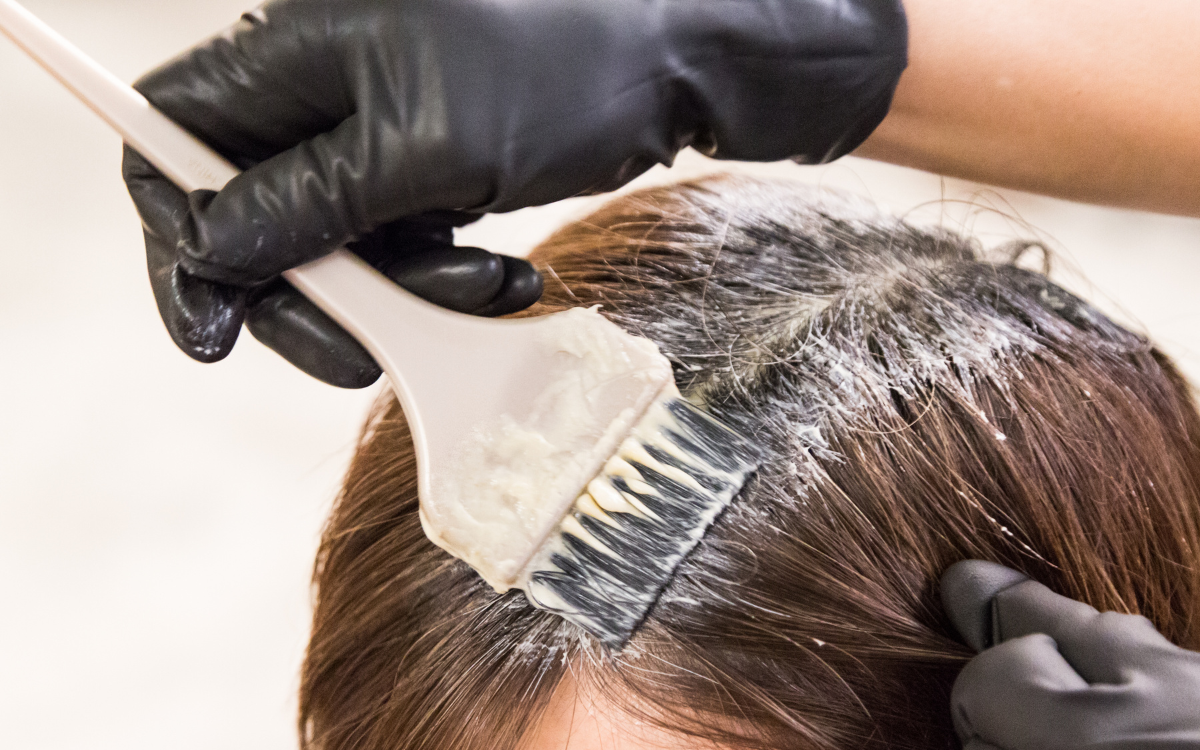
Absorption and Adsorption
When hair dye comes into contact with a surface, it can be absorbed or adsorbed. Absorption involves the penetration of the dye into the material, while adsorption is the adherence of the dye molecules to the surface.
The porous nature of materials like skin, fabrics, and some surfaces allows the dye molecules to be absorbed or adsorbed, making the stains difficult to remove.
Hydrophobic and Hydrophilic Interactions
Hair dye molecules often have hydrophobic (water-repelling) and hydrophilic (water-attracting) regions. This duality allows them to interact with a variety of surfaces.
The hydrophobic parts of the dye molecules can bind to organic materials, while the hydrophilic parts can interact with water molecules, contributing to the dye’s resistance to simple water-based cleaning.
Oxidation and Polymerization
Some hair dyes undergo chemical reactions, such as oxidation and polymerization, when exposed to air or other substances. These reactions can lead to the formation of larger, more complex molecules that are challenging to remove.
Porosity of Materials
The porosity of different materials plays a role in stain retention. Porous materials, like certain types of fabric or unfinished surfaces, can absorb the dye more readily, making the stains harder to eliminate.
pH Sensitivity
Hair dye may exhibit sensitivity to pH. Changes in pH levels can affect the stability and solubility of the dye molecules, influencing their ability to bond with or release from surfaces.
To effectively remove hair dye stains, it’s crucial to consider the nature of the stained material and use appropriate cleaning methods. For example, using solvents, detergents, or stain removers designed for the specific material can help break the bond between the dye molecules and the surface, facilitating stain removal. However, prevention is often the best approach, and taking precautions such as using protective barriers during the dyeing process can help minimize stains on skin and surfaces.
Home Remedies for Hair Dye Removal
Removing hair dye stains from various surfaces can be challenging, but there are several home remedies that may help. Keep in mind that the effectiveness of these methods can vary depending on the type of surface and the type of dye used. Always test a small, inconspicuous area first to ensure that the remedy doesn’t cause further damage.
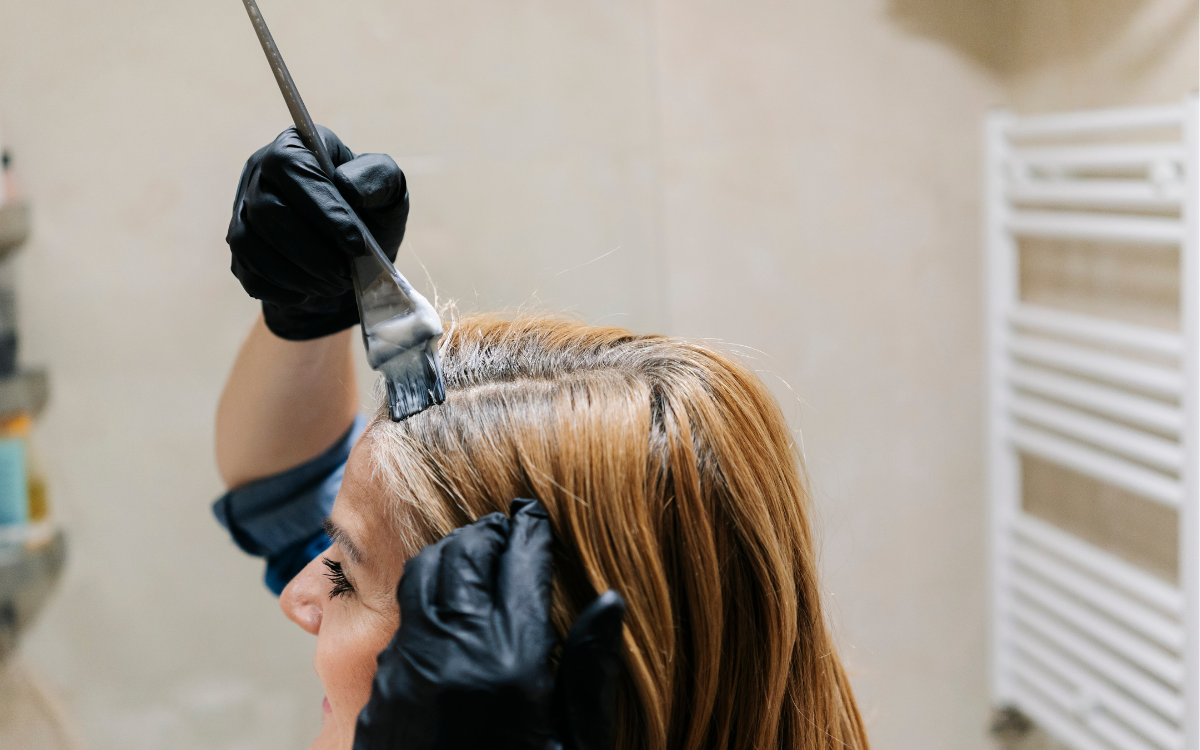
Here are some home remedies for hair dye removal:
On Skin
Baking Soda Paste
- Mix baking soda with a small amount of water to create a paste.
- Gently scrub the stained area with the paste using a soft cloth or your fingertips.
- Rinse thoroughly.
Toothpaste
- Apply non-gel toothpaste to the stained skin.
- Gently rub in a circular motion and rinse.
Baby Oil or Olive Oil
- Apply baby oil or olive oil to the stained area.
- Rub gently to loosen the dye, then wash with soap and water.
Nail Polish Remover
- Use a non-acetone nail polish remover on a cotton ball.
- Gently rub the stained skin, then wash with mild soap.
On Fabric
Vinegar and Dish Soap
- Mix equal parts white vinegar and dish soap.
- Dab the mixture onto the stain and gently rub.
- Rinse with cold water.
Hydrogen Peroxide and Dish Soap
- Mix equal parts hydrogen peroxide and dish soap.
- Apply the mixture to the stain, let it sit for a few minutes, then rinse.
Lemon Juice and Salt
- Mix lemon juice and salt to form a paste.
- Apply the paste to the stain and let it sit for a while before washing.
Rubbing Alcohol
- Dab a cloth or cotton ball with rubbing alcohol.
- Blot the stain, then rinse with cold water.
On Hard Surfaces (Countertops, Floors, etc.)
Baking Soda and Water
- Make a paste with baking soda and water.
- Apply the paste to the stain, scrub gently, and wipe clean.
Rubbing Alcohol
- Dampen a cloth or cotton ball with rubbing alcohol.
- Wipe the stained area, then clean with a damp cloth.
Magic Eraser
- For hard, non-porous surfaces, a magic eraser may help remove stains.
- Wet the eraser and gently scrub the stain.
Always follow up any of these remedies with a thorough cleaning or rinsing to ensure that no residue is left behind. Additionally, it’s important to act quickly, as fresh stains are generally easier to remove than those that have set over time. If a stain persists or if you’re unsure about using a particular remedy on a specific surface, consult the manufacturer’s guidelines or seek professional advice.
Expert Tips for Hair Dye Cleanup
Cleaning up hair dye effectively requires a combination of preventive measures and quick, targeted action. Here are some expert tips for hair dye cleanup:
Preventive Measures
- Protective Clothing: Wear old or dark-colored clothing that you don’t mind staining.
- Use Gloves: Always use gloves to protect your hands during the hair dye application process.
- Apply Barrier Creams: Use petroleum jelly or a specialized barrier cream around the hairline, neck, andears to create a protective barrier against dye stains on the skin.
Quick Action is Key
- Act Immediately: If you notice a hair dye stain on your skin, fabric, or surfaces, take action as soon as possible. Fresh stains are generally easier to remove.
- Have Supplies Ready: Keep basic cleaning supplies on hand, such as baking soda, vinegar, dish soap, rubbing alcohol, and clean cloths.
Hair Dye Cleanup on Skin
- Use Barrier Creams: If you applied a barrier cream before dyeing your hair, it can make cleanup easier. Wipe off excess dye immediately with a damp cloth.
- Baking Soda Paste: Create a paste with baking soda and water. Gently rub the stained skin in circular motions, then rinse.
Hair Dye Cleanup on Fabrics
- Blot, Don’t Rub: If you accidentally spill dye on fabric, blot the stain with a clean cloth or paper towel instead of rubbing, which can spread the stain.
- Test in an Inconspicuous Area: Before applying any cleaning solution, test it in a small, inconspicuous area to ensure it won’t damage the fabric.
- Hydrogen Peroxide: For white fabrics, you can try a mixture of equal parts hydrogen peroxide and water. Test it first and rinse thoroughly.
Hair Dye Cleanup on Hard Surfaces
- Protect Surfaces: Cover surfaces with newspaper or an old towel to prevent staining.
- Immediate Wiping: If dye spills on a countertop or floor, wipe it up immediately with a damp cloth.
- Use Suitable Cleaners: Use suitable cleaners for the surface—avoid abrasive cleaners on delicate surfaces.
Professional Stain Removers
- Stain-Removal Products: Consider using commercial stain-removal products designed for specific surfaces, following the manufacturer’s instructions.
Seek Professional Help if Needed:
- Persistent Stains: If a stain persists or if you are unsure about cleaning a specific material, seek professional help or consult the manufacturer’s guidelines.
Remember that prevention is often the best strategy. Taking precautions to protect your skin, clothing, and the surrounding environment can significantly reduce the likelihood of difficult-to-remove hair dye stains. Always follow safety guidelines provided with hair dye products and cleaning solutions.
Removing Dye from Hands
Removing dye from hands can be effectively done with a few simple household items. Here are some methods to help you get rid of hair dye stains on your hands:
Soap and Water
- One of the simplest ways to remove hair dye from your hands is to wash them thoroughly with soap and water.
- Use a mild soap and warm water.
- Scrub your hands, focusing on the stained areas, for a few minutes.
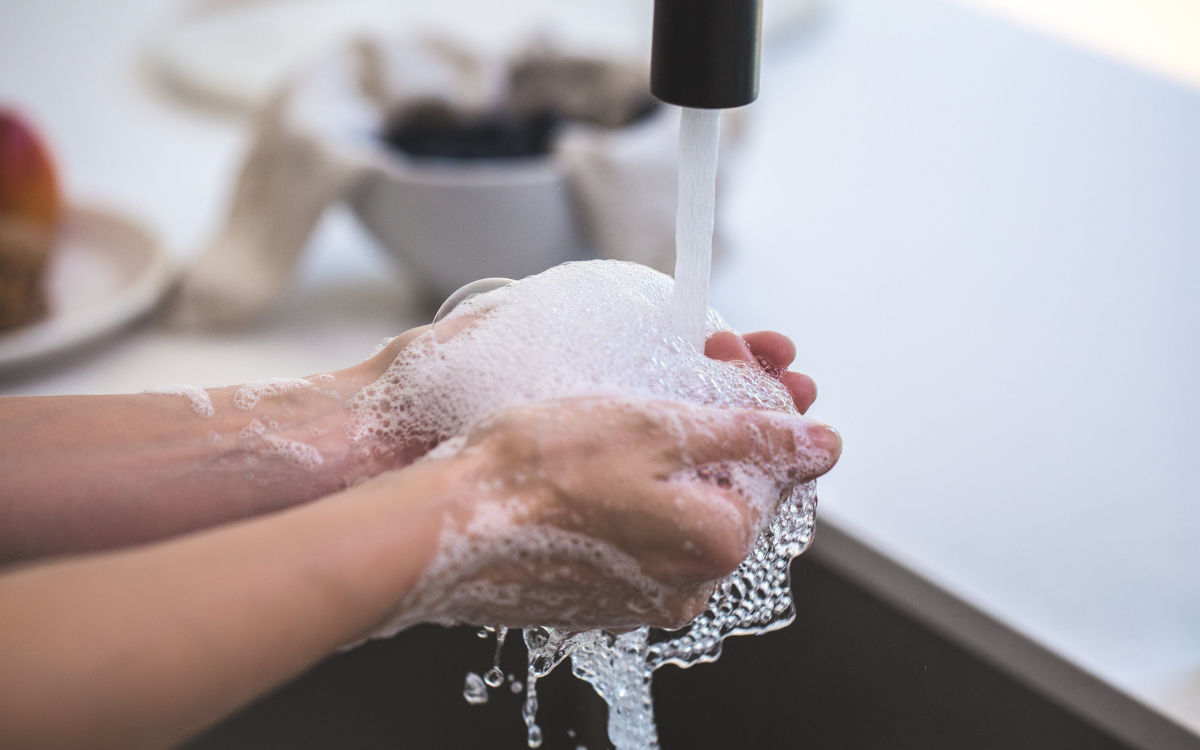
Baking Soda Paste
- Make a paste by mixing baking soda with water. The consistency should be thick enough to adhere to your skin.
- Gently rub the paste onto the stained areas of your hands.
- Rinse off with water.
Toothpaste
- Non-gel toothpaste can be effective in removing hair dye stains.
- Apply a small amount to your hands, focusing on the stained areas.
- Gently rub in a circular motion and then rinse with water.
Nail Polish Remover
- Nail polish remover containing acetone can help lift hair dye stains.
- Apply a small amount to a cotton ball or pad.
- Gently rub the stained areas, then wash your hands with soap and water.
Olive Oil or Baby Oil
- Apply olive oil or baby oil to your hands.
- Gently rub the stained areas to help break down and lift the dye.
- Wash your hands with soap and water.
Rubbing Alcohol
- Dampen a cotton ball or pad with rubbing alcohol.
- Gently rub the stained areas, then wash your hands with soap and water.
Lemon Juice
- Lemon juice’s natural acidity can be effective in removing stains.
- Apply fresh lemon juice to the stained areas.
- Gently rub and then rinse with water.
Commercial Stain Removers
- Some commercial stain removers or pre-treatment products may also be effective.
- Follow the product instructions carefully, and be sure to rinse thoroughly.
Remember to moisturize your hands after using these methods, as some of them, like acetone or repeated washing, can be drying to the skin. If you have sensitive skin or if the stain persists, consider patch testing any substance on a small area before applying it more widely. Always follow safety guidelines and precautions provided by product manufacturers.
Preventing hair dye stains requires a combination of careful preparation, protective measures, and strategic application. Here are some tips to help you minimize the chances of getting hair dye stains:
Use Protective Gear
Gloves: Always wear disposable or reusable gloves to protect your hands from hair dye. Choose gloves that fit well to avoid any accidental leaks.
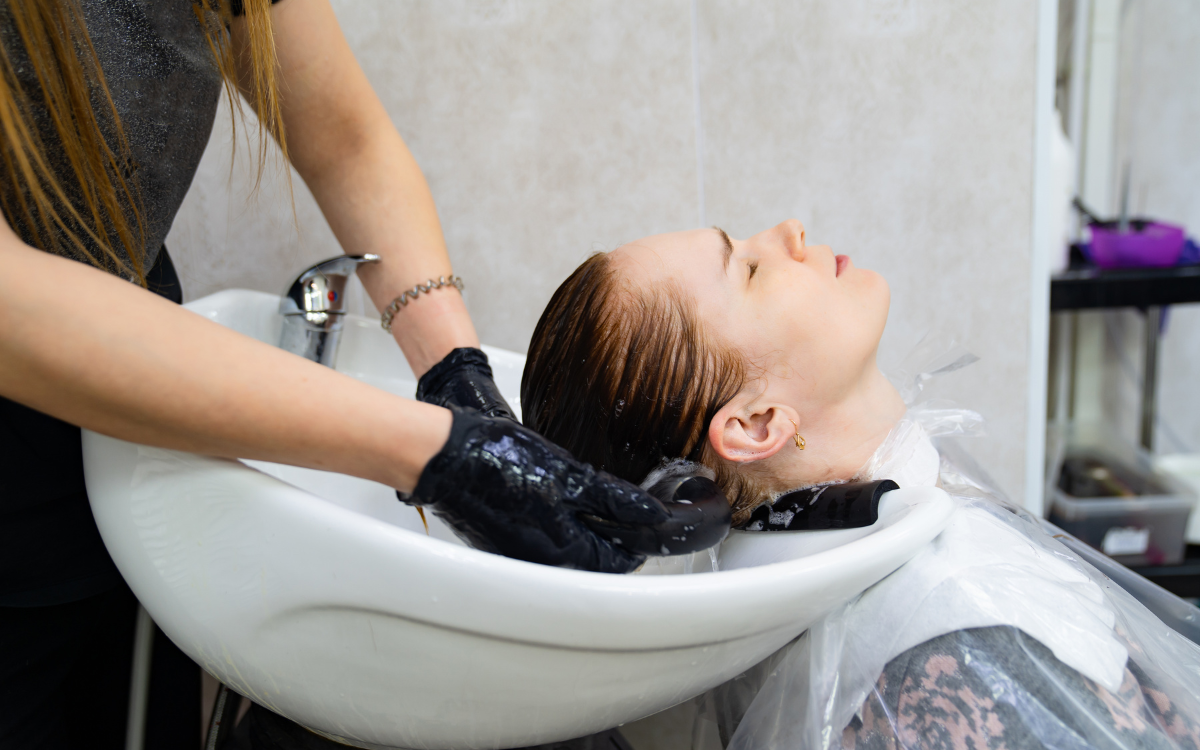
Protect Skin
Barrier Creams: Apply a barrier cream, petroleum jelly, or a thick lotion around your hairline, ears, and neck before applying hair dye. This creates a protective barrier that makes it easier to wipe away any accidental spills.
Wear Old Clothing
Dark or Old Clothes: Opt for old, dark-colored clothing that you won’t mind staining. A button-up shirt can be particularly useful as it minimizes contact between your hair and the fabric.
Cover Surfaces
Use Towels or Capes: Place old towels or capes around your shoulders to catch any drips or spills. This can protect your clothing and the surfaces in your working area.
Apply Vaseline or Lip Balm
Lip Balm on Ears: Apply a thin layer of lip balm on your ears. This can act as a barrier against dye stains and is easy to wipe off.
Section Hair Carefully
Clip or Tie Hair: Section your hair and use clips or ties to keep the sections separate. This helps in controlled application and reduces the likelihood of accidentally touching already dyed hair.
Be Diligent During Application
Take Your Time: Rushing through the application process increases the chances of spills and stains. Be patient and work carefully.
Keep Cleaning Supplies Handy
Wet Wipes or Damp Cloth: Keep wet wipes or a damp cloth nearby to quickly wipe away any accidental spills on your skin or surrounding surfaces.
Apply in Well-Ventilated Area
Ventilation: Ensure good ventilation in the room where you’re applying the hair dye. This not only helps with fumes but also reduces the chance of accidental spills due to discomfort.
Follow Instructions
Read Product Instructions: Always follow the instructions provided with the hair dye product. This includes the recommended application techniques and any specific precautions.
Protective Eyewear
Use Goggles or Glasses: If you wear glasses or goggles, consider using them during the application to protect your eyes from any accidental splashes.
Professional Help
Consider Professional Salon Services: If you’re concerned about staining and want precise results, consider getting your hair dyed at a professional salon.
By taking these preventive measures, you can significantly reduce the likelihood of hair dye stains on your skin, clothing, and surrounding surfaces during the application process.
Preventing Hair Dye Stains
To avoid hair dye stains, use gloves, protective creams, and old clothing during application. Section your hair, work carefully, and keep cleaning supplies nearby. Ventilate the area well and follow product instructions. Professional salon services can also be considered for precise results.
How Does Hair Dye Work?
Hair dye contains color molecules that penetrate the hair shaft and bond with its proteins. These molecules have hydrophobic and hydrophilic regions, allowing them to interact with various surfaces.
Stripping vs. Bleaching
tripping refers to the removal of artificial color from hair, while bleaching lightens the natural color of hair. Stripping is less harsh than bleaching but may still cause damage.
Products for Stripping Hair Color at Home
Sulfur-Based Hair Strippers
- Available in some hair color remover products.
- Follow product instructions carefully.
Where to Buy
- Hair strippers can be found at beauty supply stores, pharmacies, or online retailers. Choose reputable brands and read customer reviews.
Clarifying Shampoo
- High-clarifying shampoos can help fade color.
- Use regularly but avoid excessive drying.
Vitamin C
- Crush vitamin C tablets and mix with anti-dandruff shampoo.
- Apply to damp hair, let sit, and rinse.
Baking Soda
- Create a paste with baking soda and anti-dandruff shampoo.
- Apply, leave for 10-15 minutes, and rinse.
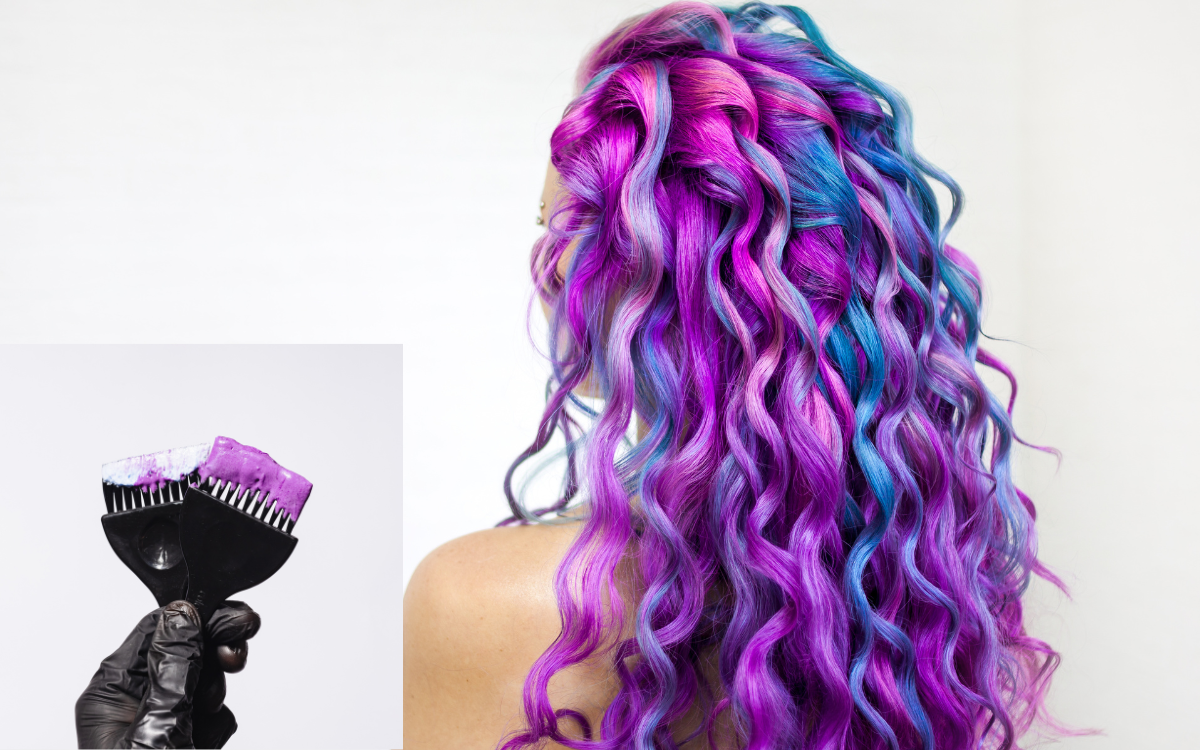
Methods to Avoid for Stripping Hair Dye
Household Cleaners
- Harsh chemicals in cleaners can damage hair.
- Avoid using without proper formulation.
Excessive Sun Exposure
- Prolonged sun exposure can fade hair color but may cause damage.
- Use UV protection if spending extended time outdoors.
Stripping Hair Color with a Professional
- Consulting a professional colorist is advisable for effective and safe color removal. They can assess your hair’s condition and recommend suitable treatments.
Takeaway:
tripping hair color at home can be done with various methods, including sulfur-based hair strippers, clarifying shampoo, vitamin C, and baking soda. However, it’s essential to follow product instructions, avoid harsh methods, and consider professional help for the best results.
Methods for Removing Hair Dye Stains from the Skin
The provided list outlines various methods for removing hair dye stains from the skin. Here’s an explanation of each method:
Use Petroleum Jelly To Prevent Stains
Before applying hair dye, you can apply petroleum jelly (like Vaseline) along your hairline, neck, and ears. This creates a barrier that helps prevent the hair dye from staining the skin. Wipe off any excess dye that may come into contact with the jelly.
Try Makeup Remover
Makeup remover, especially those designed to remove waterproof or long-lasting makeup, can be effective in breaking down and removing hair dye stains from the skin. Apply the makeup remover to a cotton pad or cloth and gently wipe the stained areas.
Use Toothpaste With Baking Soda
A mixture of toothpaste and baking soda can act as a mild abrasive to help lift hair dye stains from the skin. Apply the mixture to the stained areas, gently scrubbing in a circular motion, and then rinse off.
Try Rubbing Alcohol
Rubbing alcohol is known for its ability to break down and dissolve substances. Apply a small amount of rubbing alcohol to a cotton ball or pad and gently dab the stained skin. Be cautious not to excessively dry out the skin, and rinse thoroughly.
Use Nail Polish Remover On Hands
Nail polish remover, containing acetone or non-acetone formulas, can be effective in removing hair dye stains from the hands. Apply a small amount to a cotton pad and gently wipe the stained areas, then rinse thoroughly.
Use Hair Dye
If you have the same or a similar color of hair dye that caused the stain, applying a small amount to the stained area can sometimes help blend or cover the stain. However, this method may not be suitable for all situations, and it’s essential to test on a small, inconspicuous area first.
Remember to be gentle when applying these substances to the skin, and if any irritation occurs, discontinue use. Additionally, perform a patch test before using any product to ensure it doesn’t cause an adverse reaction.
13 Ways to Remove Hair Dye from Skin
Go to a Hair Salon
Professional help ensures effective and safe dye removal, especially for stubborn stains.
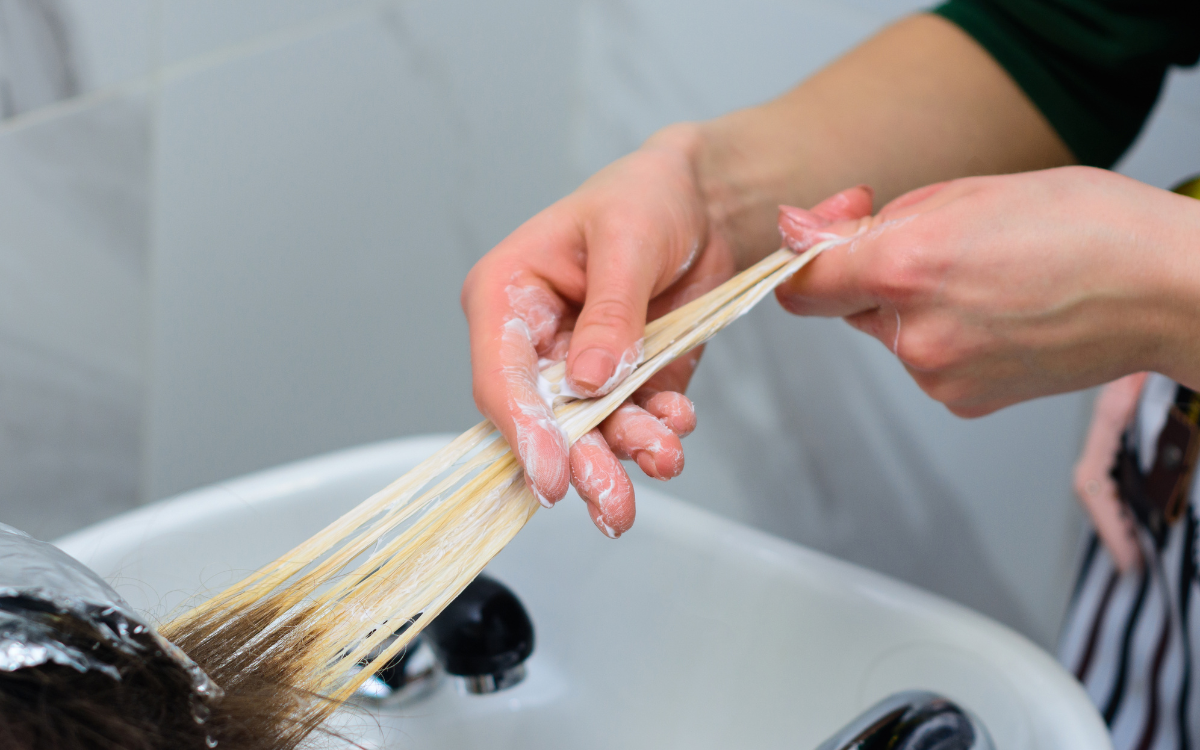
Professional Dye Removal
Hair salons often offer professional dye removal services using specialized products.
Petroleum Jelly
Apply petroleum jelly around the hairline before dyeing to create a barrier. Wipe off any excess dye immediately.
Facial Cleansing Device – LUNA™ 4
Some facial cleansing devices, like LUNA™ 4, may help gently exfoliate and remove dye stains from the skin.
Makeup Remover
Use a gentle makeup remover on a cotton pad to wipe away dye stains.
Baking Soda and Water
Make a paste with baking soda and water. Gently rub the stained area, then rinse.
Toothpaste & Toothbrush
Non-gel toothpaste on a toothbrush can act as a mild abrasive for stain removal. Gently scrub and rinse.
Baby Oil or Olive Oil
Apply baby oil or olive oil to the stained skin. Rub gently to lift the dye, then wash with soap and water.
Aloe Vera Gel
Aloe vera’s soothing properties can help with dye removal. Apply and gently massage into the stained area before rinsing.
Hairspray
Spray a small amount of hairspray onto a cotton ball and dab on the stained skin. Wipe away gently.
Hydrogen Peroxide
Mix hydrogen peroxide with water. Dab a cotton ball in the solution and gently rub the stain before rinsing.
Nail Polish Remover
Use a non-acetone nail polish remover on a cotton ball. Gently rub the stained skin and wash with mild soap.
Patience
Sometimes, stains fade naturally over time. Be patient, and avoid excessive scrubbing, which can irritate the skin.
Remember to test any product on a small area first to ensure it doesn’t cause irritation. If irritation occurs or if the stain persists, consider seeking professional assistance.
Quick and Safe Hair Dye Stain Removal
Embarking on a hair dye adventure can sometimes lead to unintended skin stains. However, worry not! We present a guide to swift and secure methods for removing hair dye stains, ensuring a seamless transition to your new look without leaving any unwanted marks.
Use Petroleum Jelly To Prevent Stains
Before starting your hair coloring process, apply a thin layer of petroleum jelly along your hairline, ears, and neck. This creates a protective barrier that prevents the hair dye from adhering to the skin. Once you’ve finished dyeing your hair, wipe away any excess dye along with the petroleum jelly, leaving your skin stain-free.
Try Makeup Remover
If you notice hair dye stains on your skin post-coloring, consider using a gentle makeup remover. Apply the remover to a cotton pad and gently wipe the stained areas. Makeup removers are designed to break down pigments, making it an effective solution for lifting hair dye stains from the skin.
Use Toothpaste With Baking Soda
Mix toothpaste with a small amount of baking soda to form a paste. Gently rub this mixture onto the stained areas of your skin. The abrasive nature of the baking soda, coupled with the cleaning properties of toothpaste, helps to lift and remove the dye stains.
Try Rubbing Alcohol
Rubbing alcohol is known for its ability to break down and dissolve substances, making it effective in removing hair dye stains. Apply a small amount of rubbing alcohol to a cotton ball and gently dab at the stained areas. Be cautious not to excessively dry out your skin, and moisturize afterward.
Use Nail Polish Remover On Hands
If you find hair dye stains on your hands, nail polish remover can be a handy solution. Apply a small amount to a cotton ball and gently rub the stained areas. Ensure that the nail polish remover contains acetone for effective stain removal.
Use Hair Dye
In a surprising twist, using a small amount of the same hair dye that caused the stain can be an effective solution. Apply a tiny amount of the dye to the stained areas and gently rub. This can help neutralize and lift the original dye from the skin.
Remember, individual skin types may react differently to these methods, so it’s essential to patch-test on a small area before widespread application. Additionally, prompt action usually yields the best results, so address stains as soon as you notice them for optimal stain removal.
Removing Hair Dye Quickly at Home
Embarking on a home hair coloring journey is exhilarating, but the aftermath of stained skin can dampen the experience. Fear not, as we’ve compiled a guide to swiftly and effectively remove hair dye at home. Before diving into the steps, let’s explore essential things you should know to ensure a successful stain removal process.
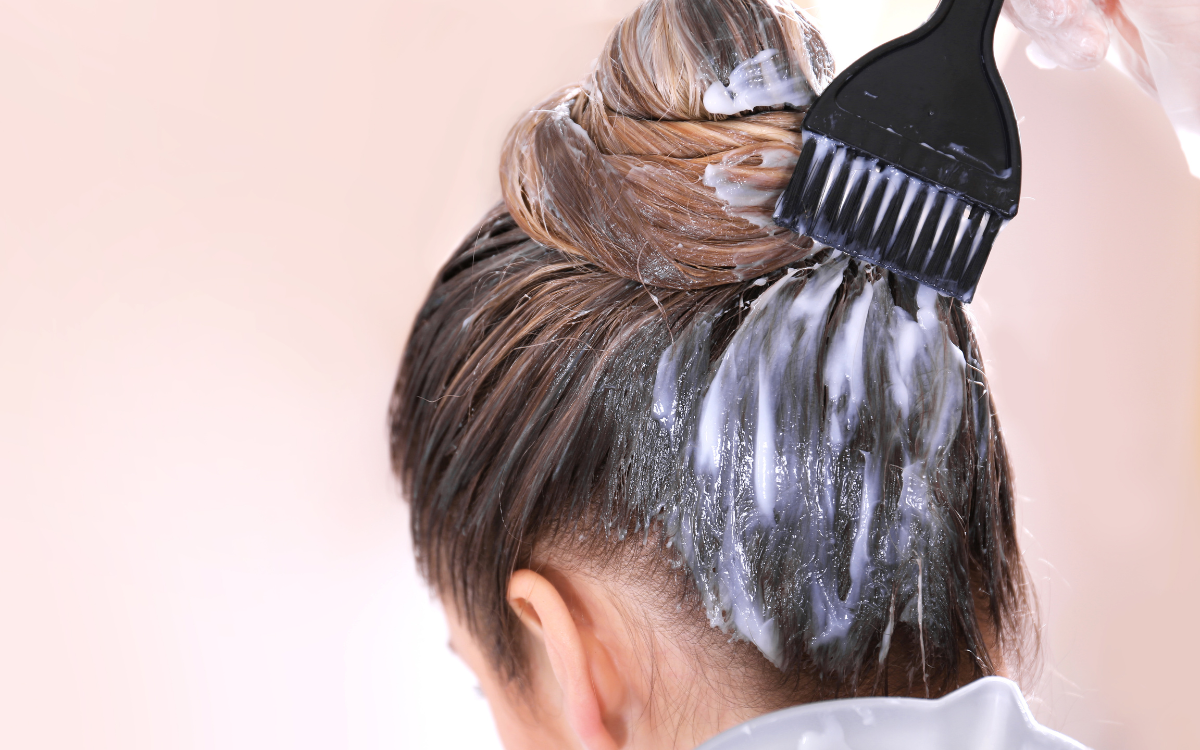
Steps
Detergent or Soap
Begin by washing the stained area with a mild detergent or soap. Gently lather and rinse, as this can help lift and loosen the dye from the skin.
Baking Soda
Create a paste by mixing baking soda with water. Apply the paste to the stained skin and gently scrub in a circular motion. The mild abrasive nature of baking soda can aid in removing dye stains.
Toothpaste
Similar to baking soda, toothpaste’s abrasive quality can be effective in stain removal. Apply a small amount to the stained area and gently rub. Rinse thoroughly.
Petroleum Jelly
Before starting the hair dye process, apply petroleum jelly along your hairline, ears, and neck to create a protective barrier. This helps prevent dye from adhering to the skin. Wipe away any excess dye and petroleum jelly post-coloring.
Baby Oil
Apply baby oil to the stained skin and gently massage. The oil helps break down the dye particles, making it easier to wipe away. Follow up with a gentle cleanser to remove any remaining residue.
Nail Polish Remover
If you notice stains on your hands, nail polish remover can be effective. Ensure it contains acetone, apply a small amount to a cotton ball, and gently rub the stained areas. Moisturize afterward to prevent dryness.
Tips
Act promptly: The sooner you address the stains, the more effective the removal process.
Patch test: Before widespread application, test any product on a small area to ensure compatibility with your skin.
Warnings
Avoid harsh scrubbing: Gentle, circular motions are more effective and prevent skin irritation.
Moisturize after removal: Replenish your skin’s moisture to prevent dryness and irritation.
Now armed with these insights, proceed confidently to erase hair dye stains and enjoy your new hair color without any lingering traces on your skin.
Expert-Recommended Methods to Remove Hair Dye
Embarking on a journey to transform your hair color is an exciting venture, but the battle against unintended skin stains can be a common challenge. Fear not, as experts recommend a series of proactive measures and effective techniques to ensure a clean and stain-free experience. Here’s a curated list of expert-approved methods to tackle hair dye stains like a pro:
Use a Coat of Vaseline When Applying the Dye
Apply a thin layer of Vaseline along your hairline, ears, and neck before dyeing. This protective barrier prevents dye from adhering to the skin, easing the cleanup process.
Wear Gloves
The simplest yet crucial step – wearing gloves during the dyeing process not only protects your hands from stains but also minimizes direct contact with the dye.
Clean During the Dyeing Process
Keep a damp cloth or baby wipes on hand while applying hair dye. Swiftly clean any accidental drips or stains, preventing them from setting on your skin.
Try Baby Wipes
Baby wipes are gentle and effective for quick cleanup. Keep them nearby to wipe away excess dye during and after the application.
Massage the Scalp and Skin
While rinsing out the dye, gently massage your scalp and skin. This helps loosen and remove any dye particles that may have settled on the skin.
Use a Color-Safe Shampoo and Conditioner
Opt for color-safe hair care products during your post-dye wash. These products are formulated to be gentle on both your hair color and skin.
Rub Petroleum Jelly Into the Skin
Similar to using Vaseline before dyeing, rubbing petroleum jelly onto stained areas can help lift and remove dye from the skin.
Apply a Gentle Soap
Wash the stained areas with a mild, gentle soap. This can effectively break down and lift dye stains without causing irritation.
Use a Hair Color Stain Remover
Invest in a specialized hair color stain remover, available in beauty supply stores. Follow the product instructions for targeted stain removal.
Wait It Out
Sometimes, patience is key. Allow a day or two for the dye stains to naturally fade as you go about your regular skincare routine.
With these expert-endorsed methods, you can confidently tackle hair dye stains, ensuring that your journey to a new hair color is not only vibrant but also free from unintended pigmentation on your skin.
Professional Tips for Hair Dye Removal
The section titled “Professional Tips for Hair Dye Removal” provides expert-recommended methods and specific products for effectively removing hair dye stains from different areas. Here’s an explanation of each part:
How to Get Rid of Dye Stains on Your Face and Along Your Hairline
Dove Beauty Bar
The Dove Beauty Bar is likely suggested for its gentle cleansing properties. Using it on the face and hairline can help remove hair dye stains while being mild on the skin.
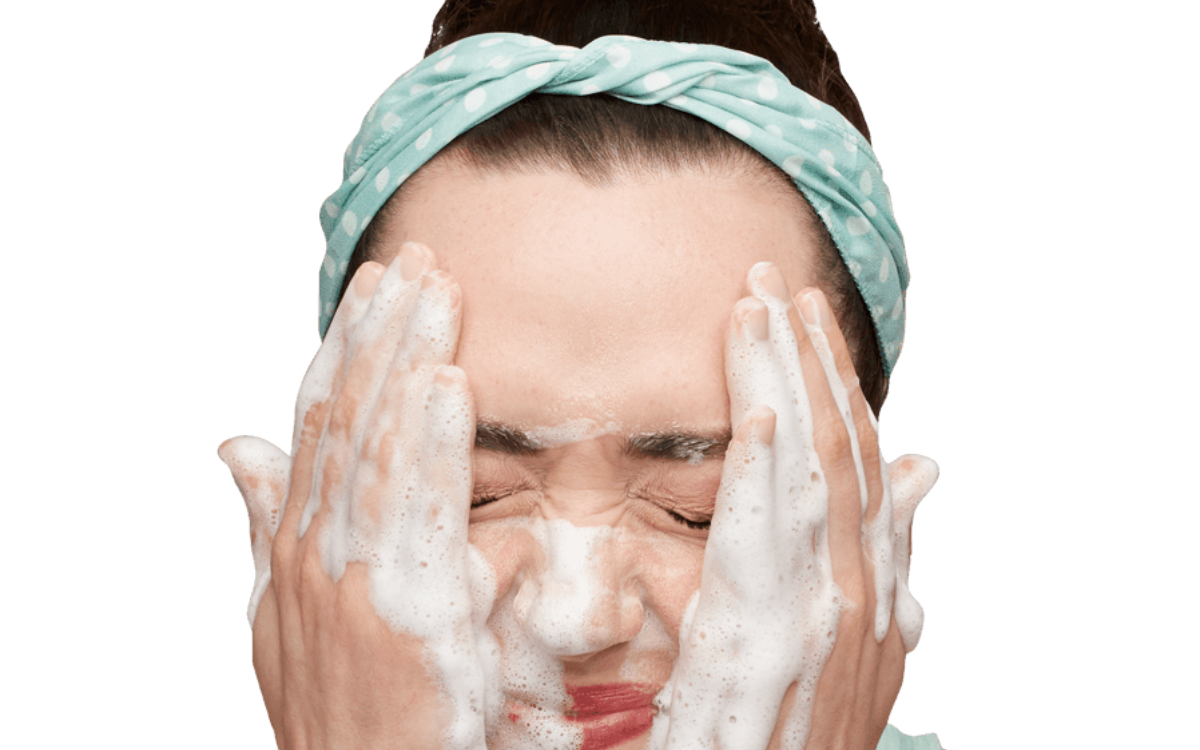
Johnson’s Baby Oil with Shea & Cocoa Butter
Baby oil is known for its ability to break down substances like hair dye. Johnson’s Baby Oil, enriched with shea and cocoa butter, may be recommended to help lift and remove stains while providing some skin nourishment.
Equate Alcohol Prep Pads
Alcohol prep pads are often used to clean and disinfect. Equate Alcohol Prep Pads may be recommended for precise application on small stained areas, effectively breaking down the dye.
Swan Hydrogen Peroxide
Hydrogen peroxide is a common stain remover. Swan Hydrogen Peroxide may be suggested for its oxidizing properties, helping to lighten and remove hair dye stains from the skin.
How to Remove Hair Dye from Your Scalp
Neutrogena T/Sal Therapeutic Shampoo
Neutrogena T/Sal Therapeutic Shampoo is likely recommended for its salicylic acid content, which can help exfoliate the scalp and remove excess dye. It may be effective in cleansing the scalp without overly drying it.
How to Get Rid of Dye Stains on Your Hands and Nails
Deborah Lippmann Marshmallow Whipped Hand & Cuticle Scrub
This scrub may offer a gentle yet effective exfoliation for the hands and cuticles, aiding in the removal of hair dye stains.
Sally Hansen Nail Polish Remover
Nail polish remover, especially one from Sally Hansen, may be suggested for its ability to dissolve nail polish and, consequently, hair dye stains on the nails.
Orly Cutique Cuticle & Stain Remover
Orly Cutique Cuticle & Stain Remover is likely recommended for its dual action in removing stains from both cuticles and nails.
Maple Holistics Honeydew Hand Sanitizer Spray
The hand sanitizer spray may offer a convenient way to clean hands and remove hair dye stains. The added benefit of honeydew may provide a pleasant scent.
How to Prevent Hair Dye Stains in the First Place
Aquaphor Healing Ointment
Aquaphor Healing Ointment is likely recommended as a preventive measure. Applying it along the hairline before dyeing may create a protective barrier, reducing the likelihood of stains.
Viva Naturals Organic Extra Virgin Coconut Oil
Coconut oil is known for its moisturizing properties. Using Viva Naturals Organic Extra Virgin Coconut Oil before hair dye application may help prevent dye from clinging to the skin.
Vaseline Original Petroleum Jelly
Petroleum jelly, like Vaseline, is often used to create a barrier. Applying it around the hairline can help prevent hair dye stains on the face and neck.
Garnier Whole Blends Ginger Recovery Conditioner
Using Garnier Whole Blends Ginger Recovery Conditioner may be suggested to create a protective layer on the hairline, making it easier to wipe off any accidental dye stains during the application process.
FAQs (Frequently Asked Questions)
Can I use nail polish remover to get rid of hair dye stains?
While effective, nail polish remover can be harsh on the skin. It’s recommended to explore gentler alternatives like coconut oil or specialized wipes.
How long should I wait before trying to remove hair dye from the skin?
Act promptly. The sooner you address the stain, the higher the chances of successful removal.
Are commercial hair dye removers safe for all skin types?
Most commercial removers are designed to be safe, but it’s advisable to check for any specific skin sensitivities and conduct a patch test.
Can I use the same methods for both permanent and semi-permanent hair dyes?
Yes, the removal methods discussed apply to both permanent and semi-permanent hair dyes.
What if the stain persists after trying multiple methods?
If the stain persists, consult a dermatologist for professional advice and specialized treatments.
Is it possible to prevent hair dye stains altogether?
Yes, applying a layer of petroleum jelly on the skin before dyeing can act as a protective barrier, minimizing the risk of stains.
Conclusion
Dealing with hair dye stains doesn’t have to be a stressful experience. Armed with the knowledge from this guide, you can confidently tackle stains and keep your skin looking vibrant and stain-free.
